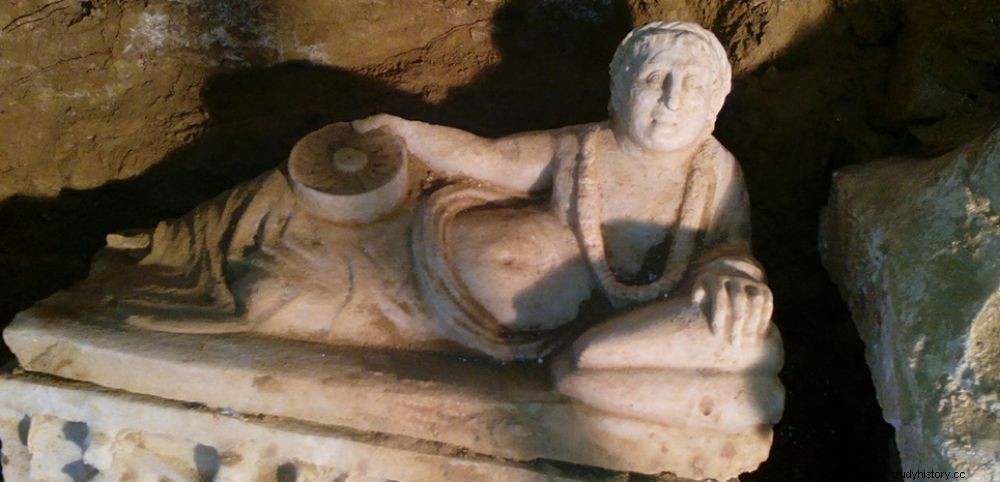 Etruscan tomb from the 3rd-4th century BC discovered on November 28, 2015, near Citta delle Pieve, in Umbria (Italy). Credit Soprintendenza Archeologia dell'Umbria
Etruscan tomb from the 3rd-4th century BC discovered on November 28, 2015, near Citta delle Pieve, in Umbria (Italy). Credit Soprintendenza Archeologia dell'Umbria FIND. The farmer who was plowing his field did not expect to make such an exceptional find. It was not far from Citta delle Pieve, a small town in Umbria near Perugia, that he unearthed an Etruscan tomb. Particularity of this ancient burial:it has remained untouched since the 3 e or 4 e century before our era! "This is an unexpected discovery" , said Clarita Natalini, the head of the Archaeological Superintendence of Umbria, rather accustomed to the looting of these ancient vaults by the tombarolli .
The Citta delle Pieve burial seems more than promising. The interior of the tomb, partially engulfed by landslides, would consist of a rectangular chamber of 5 m 2 comprising two sarcophagi, one in alabaster, the other covered in painted plaster. Marble urns containing cremated remains and votive vases would complete the ensemble. A skeleton of a man, as well as an inscription in the name of a man named Laris would have been deciphered on one of the tombs.
A sophisticated and refined civilization
If this discovery fascinates researchers so much, it is because it represents only the 2 e inviolate Etruscan tomb discovered after that of Tarquinia in September 2013. And that very few inscriptions (see below) Etruscans have come down to us. A mysterious people, the Etruscans nevertheless built in Italy, long before the Romans, one of the most sophisticated and refined civilizations of antiquity. Appeared at the turn of 10 e century before our era in ancient Etruria (Tuscany), they dominated half of the peninsula for nearly five centuries, before being supplanted and absorbed by Rome, the great rival. In the ancient tombs of the 6 th and 5 e century before our era, many ritual scenes evoke funerals among the living, illustrating dance and music performances. A cult rendered to the dead by banquets will lead to the appearance of astonishing sarcophagi, featuring guests, like those found in this burial.
Etruscan writing
Contrary to popular belief, Etruscan writing has nothing enigmatic for specialists. Driven to transcribe their language for commercial reasons, the Etruscans adopted the Greek alphabet used by their neighbors in the colonies of Cumae, in southern Italy, from the 7
e
century before our era. Knowing how to read Greek, it is therefore possible for us to understand (even imperfectly) most of the short dedications found during excavations. This is less true for longer texts. However, there are few texts apart from funerary inscriptions.
